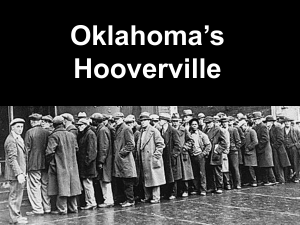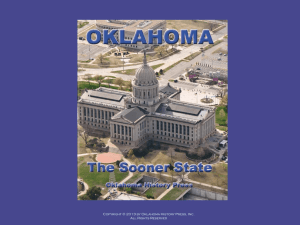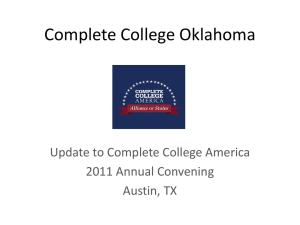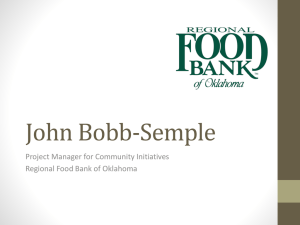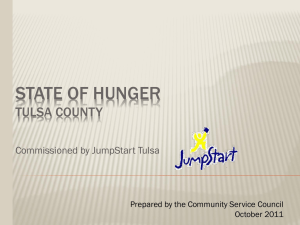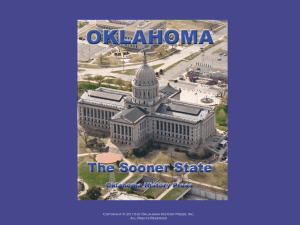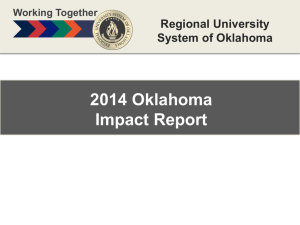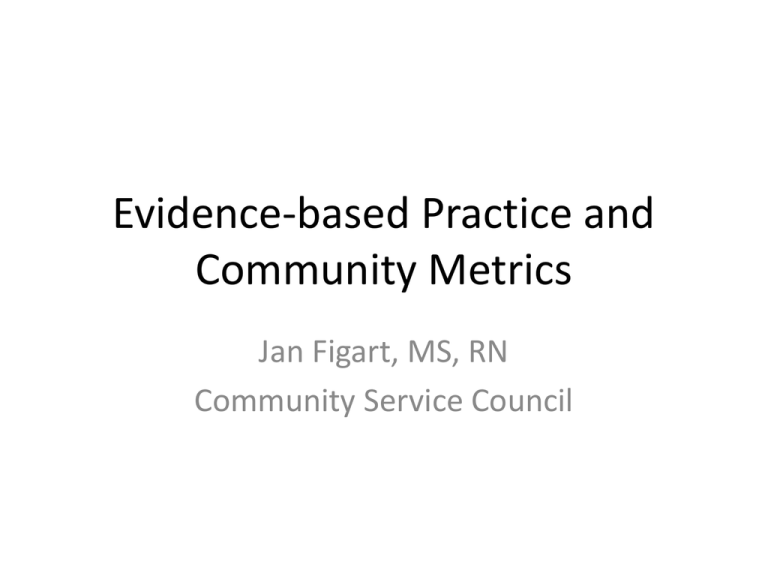
Evidence-based Practice and
Community Metrics
Jan Figart, MS, RN
Community Service Council
Home Visitation Model
Child Indicators
The Adverse Childhood Experiences
(ACE) Study
• Major American research project that poses the question of
whether and how childhood experiences affect adult health
decades later
• Provides compelling evidence that:
– Adverse childhood experiences are surprisingly common
– ACE’s happen even in “the best of families”
– ACE’s have long-term, damaging consequences
• Findings reveal powerful relationships between emotional
experiences as children and physical and mental health as
adults
Source: The Adverse Childhood Experiences Study website: www.acestudy.org, “About the Adverse Childhood Experiences Study.”
The Adverse Childhood Experiences
(ACE) Study Pyramid
Death
Early Death
Child Indicators
Disease, Disability
and Social
Problems
Adoption of Health-risk
Behaviors
Social, Emotional and Cognitive
Impairment
Disrupted Neurodevelopment
Adverse Childhood Experiences
Conception
Mechanisms by which Adverse Childhood Experiences Influence Health
and Well-being throughout the Lifespan
Source: The Adverse Childhood Experiences Study website: www.acestudy.org, “About the Adverse Childhood Experiences Study.”
Adverse Childhood Experiences…
Child Indicators
…GROWING UP IN A HOUSEHOLD WITH:
• Recurrent physical abuse
• Recurrent emotional
abuse
• Sexual abuse
• An alcohol or drug abuser
• An incarcerated
household member
• Someone who is
chronically depressed,
suicidal, institutionalized
or mentally ill
• Mother being treated
violently
• One or no parents
• Emotional or physical
neglect
Source: The Adverse Childhood Experiences Study website: www.acestudy.org, “What are Adverse Childhood Experieinces
(ACE’s).”
Child Indicators
…Lead to Health-Risk Behaviors…
•
•
•
•
•
•
Smoking
Overeating
Physical inactivity
Heavy alcohol use
Drug use
Promiscuity
Source: The Adverse Childhood Experiences Study website: www.acestudy.org
Child Indicators
…Which Cause Disease, Disability and Social
Problems in Adulthood
•
•
•
•
•
•
•
•
Nicotine addiction
Alcoholism
Drug addiction
Obesity
Depression
Suicide
Injuries
Unintentional pregnancy
• Heart disease
• Cancer
• Chronic lung and liver
disease
• Stroke
• Diabetes
• Sexually transmitted
diseases
Source: Felitti, Vincent J., “The Relationship of Adverse Childhood Experiences to Adult Health: Turning gold into lead;” CDC Media
Relations, May 14, 1998, “Adult Health Problems Linked to Traumatic Childhood Experiences.”
Age of Children of Confirmed Abuse and Neglect
Oklahoma, FY 2011
1,399
Child Indicators
(17.3%)
2,252
1,274
(15.7%)
(27.8%)
(16.2%)
(23.0%)
1,316
1,869
Under 1
1-2
3-6
7-11
12 & older
Source: Oklahoma Dept. of Human Services, Children & Family Services Division.
Prepared by the Community Service Council of Greater Tulsa
Average Daily Membership and Percentage of Children
Enrolled in Special Education, by School District
Tulsa County County, School Year 2010-11
50,000
ADM
Percent in Special Education
Child Indicators
ADM
% Spec. Ed.
50%
Tulsa County total ADM =
112,575; percentage in
special education = 13.4%
40,000
40%
30,000
30%
20,000
20%
10,000
10%
0
0%
Berryhill
Bixby
Broken
Arrow
Collinsville Glenpool
Jenks
Keystone
Liberty
Owasso
Sand
Springs
Skiatook
Sperry
Tulsa
Union
ADM 1,208.9 5,013.2 16,675.5 2,652.6 2,384.6 10,044 384.6 596.4 9,107.5 5,102.3 2,541.8 1,219.8 40,808.214,835.1
% Spec. Ed.
9% 14.2% 14.5% 12.9% 12.6% 14.8% 14.9% 16.2% 10.4% 12.7% 12.7% 12.5% 14.6% 10.2%
Source: Oklahoma State Department of Education, Education Oversight Board, Office of Accountability, Profiles 2011 Reports.
Prepared by the Community Service Council of Greater Tulsa
Juvenile Arrests, by Type of Crime
Tulsa County, 2001 through 2011
Number of arrests
3,500
3,000
2001
2007
2002
2008
2004
2010
2005
2011
2006
A total of 2,852 juvenile arrests were
made in Tulsa County in 2011, for a
rate of 85.2 per 1,000 juveniles age
10-17, down from 5,954 arrests for a
rate of 91.9 in 2001.
2,500
Child Indicators
2003
2009
2,000
1,500
1,000
500
0
Index crimes
Includes murder, rape,
robbery aggravated
assault, burglary, larceny,
and motor vehicle theft.
Drug related
Includes sale/
manufacturing
and possession
of drugs.
Source: Oklahoma State Bureau of Investigation, Uniform Crime Reports.
Alcohol related
Includes driving
under the influence,
liquor law violations,
and drunkenness.
Other crimes
Includes other assaults,
disorderly conduct, curfew
& loitering, runaway and all
other non-traffic offenses
Youth Risk Behavior Survey:
Summary of Alcohol, Other Drug & Tobacco Use
High School Students, Oklahoma, 2003 through 2011, and U.S. 2011
Used once or
more during
past 30 days...
40.5%
43.1%
39%
38.3%
38.7%
Alcohol
22%
18.7%
15.9%
17.2%
19.1%
23.1%
Child Indicators
Marijuana
Ever
used...
47.8%
9.9%
7.1%
5.5%
4.8%
4.2%
3.8%
Methamphetamine
22.2%
18.4%
19.1%
16.8%
17.2%
25.6%
26.5%
28.6%
23.2%
22.6%
22.7%
18.1%
17.5%
Offered/sold/given
illegal drugs at school
Smoked cigarettes
during past month
2003 Oklahoma
2005 Oklahoma
2007 Oklahoma
2009 Oklahoma
2011 Oklahoma
2011 US
12.3%
13.3%
11%
Drove after drinking
alcohol in past month
7.2%
8.2%
25.8%
26.8%
23.1%
19.7%
24.1%
Rode with drinking
driver in past month
0%
10%
20%
30.6%
30%
40%
50%
Source: Centers for Disease Control, Youth Risk Behavior Surveillance System; Oklahoma State Department of Health,
OK2SHARE.
Prepared by the Community Service Council of Greater Tulsa
60%
Youth Risk Behavior Survey:
Summary of Sexual Behaviors, Suicide & Physical Health
High School Students, Oklahoma, 2003 through 2011, and U.S. 2011
50%
49.3%
50.9%
51.1%
50.5%
47.4%
Ever had
sexual intercourse
5.8%
6.5%
5.8%
4.7%
5%
6.2%
Child Indicators
Had sex before age 13
64.3%
61.7%
59.6%
56.7%
57.1%
60.2%
Used condom last time
17.7%
16.4%
16.7%
22.7%
20.5%
18%
Used birth control
pills last time
7%
7.9%
5.9%
7%
6.3%
7.8%
Attempted suicide
in past year
14.2%
15.9%
15.2%
16.4%
16.3%
15.2%
Overweight
(according to BMI)
na
38.2%
Physical activity for
60 min/day 5 of past 7 days
0%
20%
49.6%
47.4%
50.8%
49.5%
40%
2003 Oklahoma
2005 Oklahoma
2007 Oklahoma
2009 Oklahoma
2011 Oklahoma
2011 US
60%
Source: Centers for Disease Control, Youth Risk Behavior Surveillance System; Oklahoma State Department of Health,
OK2SHARE.
Prepared by the Community Service Council of Greater Tulsa
80%
Oklahoma’s Prison Population
Fiscal Years 1950 - 2011
Prison population
US incarceration rates (2011):
Male: 938 per 100,000 people
Female: 67 per 100, 000 people
Total: 497 per 100,000 people
25,000
Oklahoma incarceration rates (2011):
Male: 1,244 per 100,000 people
Female: 142 per 100,000 people
Total: 686 per 100,000 people
20,000
15,000
10,000
5,000
Source: Oklahoma Department of Corrections.
Prepared by the Community Service Council of Greater Tulsa
2010
2011
2005
2000
1995
1990
1985
1980
1975
1970
1965
1960
1955
0
1950
Crime & Incarceration
30,000
Oklahoma's Rankings in Health Determinants,
2012 (part 1)
According to United Health Foundation's State Health Rankings
1992
Personal Behav iors
2002
2012
Prevalence of smoking
#47
Prevalence of Binge Drinking
#12
Prevalence of obesity
#45
Community & Env ironment
High school graduation
#25
Violent crime
#39
Occupational fatalities
#42
Infectious disease
#11
Children in poverty
#24
Air pollution
#29
#0
#10
#20
#30
Ranking: 1=best, 50=worst
Note: Missing data values represent years in which variables were not measured/ranked.
Source: United Health Foundation, “America’s Health Rankings.“
#40
#50
Oklahoma's Rankings in Health Determinants,
2012 (part 2)
According to United Health Foundation's State Health Rankings
1992
Public & Health Policies
2002
2012
Lack of health insurance
#35
Public health funding (per capita)
#15
Immunization coverage
#20
Clinical Care
Early prenatal care
#47
Primary Care Physicians
#49
Preventable Hospitalizations
#45
All Determinants
#42
#0
#10
#20
#30
#40
#50
Ranking: 1=best, 50=worst
Notes: Missing data values represent years in which variables were not measured/ranked. Updated data for “early prenatal care” were not available. Shown
results are for 1991, 2001, & 2011.
Source: United Health Foundation, “America’s Health Rankings.“
Oklahoma's Rankings in Health Outcomes,
2012
According to United Health Foundation's State Health Rankings
Oklahoma’s overall health ranking for 2012 is #
1992
2002
43
2012
Poor mental health days
#46
Poor physical health days
#40
Geographic disparity
#20
Infant mortality
#39
Cardiovascular deaths
#48
Cancer deaths
#42
Premature death
#46
All Health Outcomes
#44
#0
#10
#20
#30
Ranking: 1=best, 50=worst
Note: Missing data values represent years in which variables were not measured/ranked.
Source: United Health Foundation, “America’s Health Rankings.“
#40
#50
Home Visitation Model
Social Determinant Model
Race Comparison for Total Population and Children under
Oklahoma and Tulsa County, 2010
Tulsa County
Oklahoma
59.3%
19.8%
22.8%
54.9%
Demographics
Under 5
2.5%
7.3%
1.6%
Hispanic
16.8%
11.0%
8.2% N = 266,547
Hispanic
20.6%
12.6%
N = 48,035
69.2%
72.2%
Total
Population
10.1%
11.7%
1.7%
2.3%
8.6%
Hispanic
8.9%
White
7.4%
N = 3,642,361
Black
American Indian
6.0%
Hispanic
11.0%
Asian
Source: US Census Bureau, 2010 Census.
Prepared by the Community Service Council of Greater Tulsa
10.7%
N = 591,982
Other/2+ races
Population Trends and Projections by Age Group
Demographics
Projections
Tulsa County, 1970 - 2030
2030
6.3
16.6
2020
6.6
17.1
2010
7.4
18.2
9.7
52.6
10.4
1.9
2000
7.4
18.9
10
51.9
10.4
1.4
1990
7.7
18.4
10.1
52.2
10.4
1.2
1980
7.7
19.8
9
.9
1970
8.5
8.1
.6
0%
9.2
47.8
9.7
50.5
13.5
25.9
20%
17.5
2.5
49.1
10.7
40%
46.2
60%
80%
Percent of population
0-4
5-17
18-24
25-64
2.1
14.1
65-84
85+
Source: US Census Bureau, 1970, 1980, 1990, 2000, & 2010 Censuses; US Census Bureau, Population Estimates
Division, Population Projections, 2000 - 2030.
Prepared by the Community Service Council of Greater Tulsa
100%
Living Arrangements of Related Children Under 18
Tulsa County, 1970, 1980, 1990, 2000 & 2009-11 Estimates
100%
1970
1980
1990
2000
2009-11 est.
80%
Demographics
60%
40%
20%
0%
1970
1980
1990
2000
2009-11 est.
Married Couple
Male-headed
Female-headed
Other relatives
82%
74%
71%
65%
60%
1%
2%
3%
5%
6%
11%
16%
18%
21%
24%
4%
6%
5%
7%
8%
Children living with 1 or both parents
Source: US Census Bureau, 1970, 1980, 1990, and 2000 Censuses; US Census Bureau, American Community Survey
2009-11.
Prepared by the Community Service Council of Greater Tulsa
Ratio of Income to Poverty Level
Percentage of Total Population and Children
Tulsa County, 2007-11
Percentage of population
Below 100%
75%
Below 185%
Below 200%
50%
25%
0%
Below 100%
Below 185%
Below 200%
Total population
15.1%
32.4%
35.2%
Under 18
22.6%
43.7%
46.8%
Source: US Census Bureau, 2007-11 American Community Survey.
Under 6
27%
50.1%
53.1%
6-17
20.2%
40.2%
43.4%
Comparison of Wages: Self-Sufficiency, Welfare, Minimum,
Poverty, 185% of Poverty, and Median Family Income
Family of Three, Tulsa County, 2012*
Annual Wage
Economics & Employment
$80,000
$75,495
($35.75/hr)
$60,000
Self-Sufficiency Wage = $39,978
$58,854
($18.93/hr)
($27.87/hr)
$40,000
$35,317
$20,000
$15,312
$10,309
$0
Married-couple
families w/
children <18
$38,277
($18.12/hr)
$21,410
$19,090
($10.14/hr)
($4.88/hr)
($7.25/hr)
($9.04/hr)
($16.72/hr)
Welfare
Wage
Minimum
Wage
Poverty
Wage
185% Poverty
Wage
All families w/
children <18
Male-headed
families w/
children <18
Female-headed
families w/
children <18
Median Family
Income
(2006-08 ACS)
Notes: For the self-sufficiency wage, family of three consists of one adult, one preschooler and one schoolage child. Hourly wages given
assume full-time, year-round employment. The 2009 poverty guidelines are being used until at least March 1, 2010. Welfare wage is the
combined value of TANF, SNAP, & WIC.
Source: Oklahoma Association of Community Action Agencies and the Oklahoma Asset Building Coalition, December 2009, The
Self-Sufficiency Standard for Oklahoma 2009; 2012 HHS Poverty Guidelines, Federal Register, Vol. 77, No. 17, January 26, 2012, pp.
4034-4035; Oklahoma State Dept. of Human Services; U.S. Census Bureau, 2009-11 American Community Survey.
Participation in Public Assistance Programs
Number of Participants and Percentage of Population Participating
Tulsa County, 2012
Economics & Employment
Soonercare Total (185%/100%)
19.8%
121,054
51.2%
79,699
Soonercare <19 (185%)
17.4%
3,974
WIC Infants (185%)
18.1%
8,854
WIC age 1-5 (185%)
10.1%
3,485
Child Care Subsidy <5 (185%)
13.9%
85,722
SNAP Total (130%)
1.7%
2,581
TANF <18 (50%)
53.1%
35,153
Elem. School Free Lunch (130%)
9.2%
6,116
Elem. School Reduced Lunch (185%)
150,000
100,000
50,000
Number of Participants
0%
0
20%
40%
60%
Percent of Population
Source: Oklahoma Dept. of Human Services, Statistical Bulletin, September 2012; Oklahoma State Dept. of Education, Low Income Report for 2011-12; US
Census Bureau, 2010 Census; Oklahoma State Department of Health-WIC Service, Caseload Report, October 2012; Oklahoma Health Care Authority, Monthly
Enrollment Fast Facts November 2012.
Educational Attainment for Persons Age 25 & Older
Tulsa County, 2009-11 Estimates
11.5%
Economics & Employment
Less than
high school
26.2%
High school
graduate
24.7%
Some
college
8.2%
Associate
degree
20.1%
Bachelor's
degree
6.3%
Master's
degree
2.1%
Professional
school degree
0.9%
Doctorate
degree
0%
5%
10%
15%
20%
Percent of persons 25+
Source: US Census Bureau, American Community Survey 2009-11.
Prepared by the Community Service Council of Greater Tulsa
25%
30%


